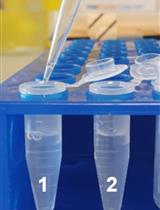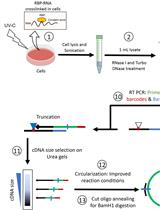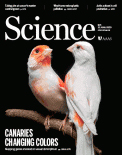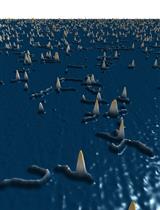- EN - English
- CN - 中文
In vitro Cleavage and Electrophoretic Mobility Shift Assays for Very Fast CRISPR
快速CRISPR的体外裂解和电泳迁移率位移测定
发布: 2021年09月05日第11卷第17期 DOI: 10.21769/BioProtoc.4138 浏览次数: 4365
评审: Pilar Villacampa AlcubierreWenyang Li

相关实验方案

HaloChIP-seq用于体内小鼠转录因子 Cistromes 的抗体独立映射
Ann Louise Hunter [...] David A. Bechtold
2022年07月05日 3971 阅读

用于在活细胞中以单个核苷酸分辨率分析RNA-蛋白质相互作用位点的修订iCLIP-seq方案
Syed Nabeel-Shah and Jack F. Greenblatt
2023年06月05日 5096 阅读
Abstract
CRISPR-Cas9 has transformed biomedical research and medicine through convenient and targeted manipulation of DNA. Time- and spatially-resolved control over Cas9 activity through the recently developed very fast CRISPR (vfCRISPR) system have facilitated comprehensive studies of DNA damage and repair. Understanding the fundamental principles of Cas9 binding and cleavage behavior is essential before the widespread use of these systems and can be readily accomplished in vitro through both cleavage and electrophoretic mobility shift assays (EMSA). The protocol for in vitro cleavage consists of Cas9 with guide RNA (gRNA) ribonucleoprotein (RNP) formation, followed by incubation with target DNA. For EMSA, this reaction is directly loaded onto an agarose gel for visualization of the target DNA band that is shifted due to binding by the Cas9 RNP. To assay for cleavage, Proteinase K is added to degrade the RNP, allowing target DNA (cleaved and/or uncleaved) to migrate consistently with its molecular weight. Heating at 95°C rapidly inactivates the RNP on demand, allowing time-resolved measurements of Cas9 cleavage kinetics. This protocol facilitates the characterization of the light-activation mechanism of photocaged vfCRISPR gRNA.
Keywords: CRISPR-Cas9 (CRISPR-Cas9)Background
Endonucleases, especially Cas9, from clustered regularly interspaced short palindromic repeats (CRISPR) and CRISPR-associated (CRISPR-Cas) adaptive immune systems (Marraffini et al., 2015) have found widespread use as highly versatile tools in the biomedical sciences from genome editing, functional screening, to imaging (Adli et al., 2018). Recently, highly resolved spatiotemporal control over Cas9 activity via very fast CRISPR (vfCRISPR) has enabled detailed studies of the DNA damage response through highly synchronized activation of Cas9 in space and time (Liu et al., 2020). For all uses, characterization of these nucleases is essential and can be most readily accomplished in vitro (Singh et al., 2016). Electrophoretic mobility shift assays (EMSA) are powerful tools to characterize protein-DNA binding that can be directly applied to determine the binding affinity of Cas9 to nucleic acids (Hellman et al., 2007). In contrast, in vitro cleavage assays allow characterization of the Cas9 DNA cleavage mechanism. In this manuscript, we outline detailed protocols for both strategies to characterize the properties of the vfCRISPR light-inducible Cas9 system. We demonstrate how both EMSA and in vitro cleavage assays characterize the binding, speed, and efficiency of vfCRISPR, which paves the way for its use in biological systems.
Materials and Reagents
10 mg/ml SpCas9 (purified in-house from BL21 CodonPlus (DE3)-RIL cells [Agilent 230245], but can also be purchased from Integrated DNA Technologies) (Alt-R®, catalog number: 1081058, storage temperature: -80°C)
tracrRNA (Integrated DNA Technologies) (Alt-R®, catalog number: 1072533, storage temperature: -80°C)
Photocaged crRNA (cgRNA) from vfCRISPR targeting PPP1R2 (BioSynthesis, sequence: GACUUCCUCUAUGGUGGCGUGUUUUAGAGCUAUGCUGUUUUG; U corresponds to replacements of uracil with NPOM-dT photocaged nucleotides, storage temperature: -80°C)
HEK293T cells (ATCC, catalog number: CRL-3216, storage temperature: liquid nitrogen vapor)
Nuclease-Free Duplex Buffer (Integrated DNA Technologies, catalog number: 11-01-03-01, storage temperature: 4°C)
PPP1R2 Fwd PCR primer (Integrated DNA Technologies, storage temperature: -20°C, sequence: 5’-GTTTCCGAGGCAGCAGTTG-3’)
PPP1R2 Rev PCR primer (Integrated DNA Technologies, storage temperature: -20°C, sequence: 5’-GCATGATAAACGTCATCGCCC-3’)
DNeasy Blood & Tissue Kit (Qiagen, DNeasy, catalog number: 69504)
QIAquick PCR purification kit (Qiagen, QIAquick, catalog number: 28104)
Q5® High-Fidelity 2X Master Mix (New England BioLabs, Q5®, catalog number: M0492, storage temperature: -20°C)
NEBufferTM 3.1 (New England BioLabs, catalog number: B7203S, storage temperature: -20°C)
Proteinase K, Molecular Biology Grade (New England BioLabs, catalog number: P8107S, storage temperature: -20°C)
E-GelTM Agarose Gels with SYBRTM Safe DNA Gel Stain, 4% (Thermo Fisher, E-GelTM, catalog number: A45206, storage temperature: room temperature)
100 bp DNA ladder (New England BioLabs, catalog number: N3231S)
HEPES (Sigma-Aldrich, catalog number: H3375)
KCl (Sigma-Aldrich, catalog number: P3911)
Glycerol (Sigma-Aldrich, catalog number: G5516)
NaOH (Sigma-Aldrich, catalog number: 221465)
Aluminum foil (Reynolds Wrap)
Nuclease-Free Water (not DEPC-treated) (InvitrogenTM, catalog number: AM9932)
Equipment
C1000 TouchTM Thermo Cycler (Bio-Rad, model number: 1851148), or any alternative thermocycler that can perform polymerase chain reaction (PCR)
E-Gel® iBaseTM Power System (Thermo Fisher, E-GelTM, catalog number: G6465), or alternative gel electrophoresis system
JAXMAN 365 nm LED flashlight (Amazon, JAXMAN, https://www.amazon.com/JAXMAN-Ultraviolet-365nm-Detector-Flashlight/dp/B06XW7S1CS/)
TyphoonTM FLA 9000 (GE Healthcare), or any alternative gel imager that can image ethidium bromide or SYBR Gold agarose gels
Procedure
文章信息
版权信息
© 2021 The Authors; exclusive licensee Bio-protocol LLC.
如何引用
Readers should cite both the Bio-protocol article and the original research article where this protocol was used:
- Zou, R. S., Liu, Y. and Ha, T. (2021). In vitro Cleavage and Electrophoretic Mobility Shift Assays for Very Fast CRISPR. Bio-protocol 11(17): e4138. DOI: 10.21769/BioProtoc.4138.
- Liu, Y., Zou, R. S., He, S., Nihongaki, Y., Li, X., Razavi, S., Wu, B. and Ha, T. (2020). Very fast CRISPR on demand. Science 368(6496): 1265-1269.
分类
分子生物学 > DNA > DNA-蛋白质相互作用
生物科学 > 生物技术
您对这篇实验方法有问题吗?
在此处发布您的问题,我们将邀请本文作者来回答。同时,我们会将您的问题发布到Bio-protocol Exchange,以便寻求社区成员的帮助。
Share
Bluesky
X
Copy link











